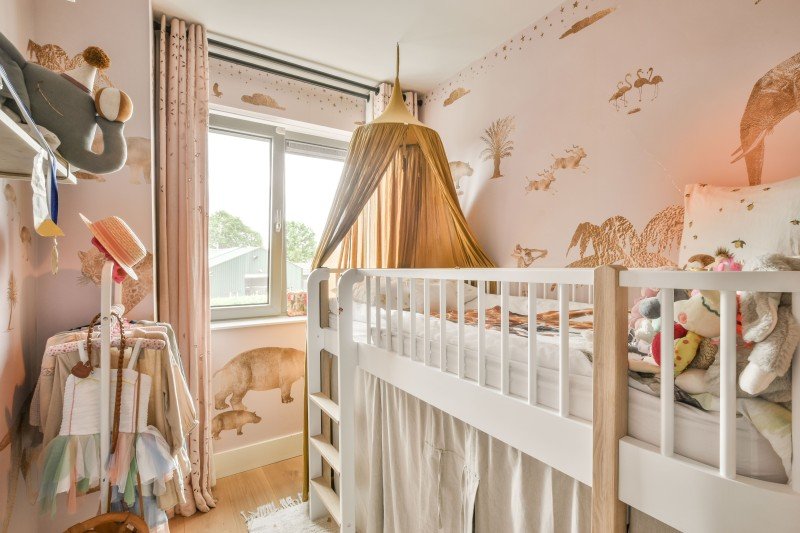The Ultimate Guide to Bunk Beds for Kids: Safety, Styles, and Solutions
Bunk beds have actually long been a popular choice amongst moms and dads looking for to optimize space in their children's bedrooms. With benefits that surpass their compact design, bunk beds offer an enjoyable and functional sleeping arrangement while motivating brother or sister bonding and fostering imagination. In this comprehensive guide, we explore various elements of bunk beds for kids, consisting of safety considerations, various styles readily available, and recommendations for choosing the ideal one for your household.
Why Choose Bunk Beds?
Bunk beds are developed to stack one bed on top of another, making use of vertical space to produce more space for play and storage. They are especially beneficial for households with numerous kids or restricted bed room space. Additionally, they offer an adventurous sleeping environment that kids typically enjoy.
Key Advantages of Bunk Beds:
- Space-saving style: Ideal for little rooms or shared spaces.
- Cost-efficient: Often more cost effective than buying 2 different beds.
- Motivates social interaction: Promotes bonding amongst brother or sisters or good friends.
- Versatile options: Available in different designs and setups to match any space design.
Safety First: Essential Considerations
When choosing a bunk bed for kids, safety ought to be the leading concern. The following functions are crucial for ensuring a protected sleeping environment:
Important Safety Features:
- Sturdy Construction: Ensure that the bed frame is made of resilient materials such as strong wood or metal.
- Guardrails: Bunk beds ought to have guardrails on both sides of the upper bunk to avoid falls.
- Ladder Safety: A strong, built-in ladder or stairs with anti-slip rungs is important for safe access to the top bunk.
- Weight Limit: Check the manufacturer's weight limit capability for both the top and bottom bunk.
- Bed mattress Size: Use the appropriate bed mattress size as specified by the bed maker to guarantee a snug fit within the bed frame.
Security Tips for Parents:
- Monitor Sleep Habits: Teach children the value of not using or leaping off the bunk beds.
- Age Appropriateness: Generally, the upper bunk is suitable for children aged 6 and older.
- Regular Inspections: Periodically examine for any loose bolts, screws, or structural damage.
Designs of Bunk Beds
Bunk beds are available in a range of designs, enabling parents to choose one that matches their kid's room decor while conference specific requirements. Below are some popular styles:
Popular Bunk Bed Styles:
- Traditional Bunk Beds: Simple and classic designs made from wood or metal without any additional functions.
- Loft Beds: Features a raised top bunk with space underneath for a desk, play location, or additional storage.
- L-Shaped Bunk Beds: Arranged in an L-shape, frequently ideal for corner areas and can have extra storage options.
- Twin over Full Bunk Beds: A twin bed on the top and a larger full-sized bed on the bottom, accommodating kids or teens of numerous ages.
- Triple Bunk Beds: Designed to fit three beds in a single footprint, perfect for larger families or slumber parties.
A Comparison of Bunk Bed Styles
| Bunk Bed Style | Description | Best For |
|---|---|---|
| Standard | Traditional style with two stacked beds | Requirement bedroom setups |
| Loft Bed | Raised bed with usable space below | Research or play areas |
| L-Shaped | Bunk beds arranged in an L-shape | Corner spaces |
| Twin over Full | Twin bed on top, complete bed below | Various age brother or sisters |
| Triple Bunk | Three stacked beds | Big families or pajama parties |
Choosing the Right Bunk Bed
When browsing for the perfect bunk bed, consider the following aspects to guarantee you make a notified choice:
Key Factors to Consider:
- Room Size: Measure the space dimensions to identify the proper size and height of the bunk bed.
- Child's Age: Consider the age of your kid(ren) when selecting a style and safety features.
- Performance: Think about how much storage or play space you need and whether the bunk bed ought to serve extra purposes.
- Spending plan: Set a budget that includes not only the bunk bed however likewise the required bed mattress and accessories like bed linen or safety gates.
FAQs About Bunk Beds for Kids
1. What age is appropriate for a kid to sleep in the top bunk?
Generally, kids aged 6 and older ought to be able to safely sleep in the leading bunk, though you ought to always consider your child's maturity level.
2. Are bunk beds safe for toddlers?
It is not advisable for toddlers or very children to sleep in the top bunk due to the danger of falling.
3. How do I maintain the bunk bed?
Examine the bed regularly for any indications of wear and tear, tightening screws, and cleaning up the bed mattress to make sure extended security and toughness.
4. Can I convert a bunk bed into two separate beds?
Many bunk beds are designed to be convertible, allowing you to separate the beds when required. katerinebannowsky.top before buying.
5. How can I optimize space in a bunk bed room?
Utilize under-bed drawers, racks, or lofted designs to produce additional storage services in a space with a bunk bed.
Bunk beds use a delightful blend of fun, functionality, and space-saving utility, making them a perfect choice for young families. By thinking about safety functions, various designs, and useful aspects such as space size and age suitability, moms and dads can choose the best bunk bed for their child's requirements. With the best option, bunk beds can change a bedroom into a wonderful space that motivates play, creativity, and bonding amongst brother or sisters. Always remember to prioritize security and upkeep to maximize this distinct sleeping plan.

